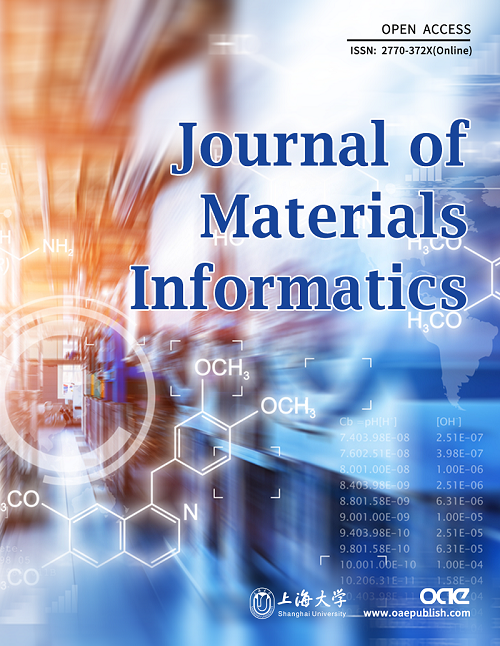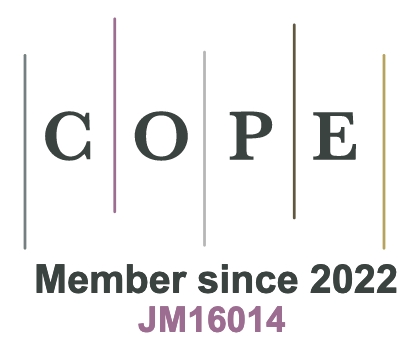REFERENCES
1. Correa-Baena J, Hippalgaonkar K, van Duren J, et al. Accelerating materials development via automation, machine learning, and high-performance computing. Joule 2018;2:1410-20.
2. Mennen SM, Alhambra C, Allen CL, et al. The evolution of high-throughput experimentation in pharmaceutical development and perspectives on the future. Org Process Res Dev 2019;23:1213-42.
4. Langner S, Häse F, Perea JD, et al. Beyond ternary OPV: high-throughput experimentation and self-driving laboratories optimize multicomponent systems. Adv Mater 2020;32:e1907801.
5. Bash D, Chenardy FH, Ren Z, et al. Accelerated automated screening of viscous graphene suspensions with various surfactants for optimal electrical conductivity. Digit Discov 2022;1:139-46.
6. Mekki-Berrada F, Ren Z, Huang T, et al. Two-step machine learning enables optimized nanoparticle synthesis. NPJ Comput Mater 2021:7.
7. Li Z, Pradeep KG, Deng Y, Raabe D, Tasan CC. Metastable high-entropy dual-phase alloys overcome the strength-ductility trade-off. Nature 2016;534:227-30.
8. Ramirez I, Causa' M, Zhong Y, Banerji N, Riede M. Key tradeoffs limiting the performance of organic photovoltaics. Adv Energy Mater 2018;8:1703551.
9. Ren S, Joulié D, Salvatore D, et al. Molecular electrocatalysts can mediate fast, selective CO2 reduction in a flow cell. Science 2019;365:367-9.
10. Bash D, Cai Y, Chellappan V, et al. Machine learning and high-throughput robust design of P3HT-CNT composite thin films for high electrical conductivity. arXiv preprint 2020;[Accepted]:2011.10382.
11. Grizou J, Points LJ, Sharma A, Cronin L. A curious formulation robot enables the discovery of a novel protocell behavior. Sci Adv 2020;6:eaay4237.
12. Abdel-Latif K, Epps RW, Bateni F, Han S, Reyes KG, Abolhasani M. Self-driven multistep quantum dot synthesis enabled by autonomous robotic experimentation in flow. Adv Intell Syst 2021;3:2000245.
13. Yong W, Zhang H, Fu H, Zhu Y, He J, Xie J. Improving prediction accuracy of high-performance materials via modified machine learning strategy. Comput Mater Sci 2022;204:111181.
14. Lim YF, Ng CK, Vaitesswar U, Hippalgaonkar K. Extrapolative bayesian optimization with gaussian process and neural network ensemble surrogate models. Adv Intell Syst 2021;3:2100101.
15. Klein A, Bartels S, Falkner S, Hennig P, Hutter F. Towards efficient Bayesian optimization for big data. Available from: https://bayesopt.github.io/papers/2015/klein.pdf [Last accessed on 21 Apr 2023].
16. Gopakumar AM, Balachandran PV, Xue D, Gubernatis JE, Lookman T. Multi-objective optimization for materials discovery via adaptive design. Sci Rep 2018;8:3738.
17. Niculescu RS, Mitchell TM, Rao RB, Bennett KP, Parrado-Hernández E. Bayesian network learning with parameter constraints. Available from: https://www.jmlr.org/papers/volume7/niculescu06a/niculescu06a.pdf [Last accessed on 21 Apr 2023].
18. Asvatourian V, Leray P, Michiels S, Lanoy E. Integrating expert’s knowledge constraint of time dependent exposures in structure learning for Bayesian networks. Artif Intell Med 2020;107:101874.
19. Liu Z, Rolston N, Flick AC, et al. Machine learning with knowledge constraints for process optimization of open-air perovskite solar cell manufacturing. Joule 2022;6:834-49.
20. Deb K. Multi-objective optimisation using evolutionary algorithms: an introduction. In: Multi-Objective Evolutionary Optimisation for Product Design and Manufacturing. Springer; 2011:3-34.
22. Fan Z, Li W, Cai X, et al. An improved epsilon constraint-handling method in MOEA/D for CMOPs with large infeasible regions. Soft Comput 2019;23:12491-510.
23. Xu B, Zhang Z. Constrained optimization based on ensemble differential evolution and two-level-based epsilon method. IEEE Access 2020;8:213981-97.
24. Tian Y, Zhang Y, Su Y, Zhang X, Tan KC, Jin Y. Balancing objective optimization and constraint satisfaction in constrained evolutionary multiobjective optimization. IEEE Trans Cybern 2022;52:9559-72.
25. Li B, Li J, Tang K, Yao X. Many-objective evolutionary algorithms: a survey. ACM Comput Surv 2015;48:1-35.
26. Zhang P, Qian Y, Qian Q. Multi-objective optimization for materials design with improved NSGA-II. Mater Today Commun 2021;28:102709.
27. Jha R, Pettersson F, Dulikravich GS, Saxen H, Chakraborti N. Evolutionary design of nickel-based superalloys using data-driven genetic algorithms and related strategies. Mater Manuf Process 2015;30:488-510.
28. Coello CA, Becerra RL. Evolutionary multiobjective optimization in materials science and engineering. Mater Manuf Process 2009;24:119-29.
29. Pakhnova M, Kruglov I, Yanilkin A, Oganov AR. Search for stable cocrystals of energetic materials using the evolutionary algorithm USPEX. Phys Chem Chem Phys 2020;22:16822-30.
30. Jennings PC, Lysgaard S, Hummelshøj JS, Vegge T, Bligaard T. Genetic algorithms for computational materials discovery accelerated by machine learning. NPJ Comput Mater 2019:5.
31. Salley D, Keenan G, Grizou J, Sharma A, Martín S, Cronin L. A nanomaterials discovery robot for the Darwinian evolution of shape programmable gold nanoparticles. Nat Commun 2020;11:2771.
32. Shahriari B, Swersky K, Wang Z, Adams RP, de Freitas N. Taking the human out of the loop: a review of Bayesian optimization. Proc IEEE 2016;104:148-75.
33. Rasmussen CE. Gaussian processes in machine learning. In: Lecture notes in computer science. Springer; 2004;3176:63-71.
34. Garrido-merchán EC, Hernández-lobato D. Predictive entropy search for multi-objective Bayesian optimization with constraints. Neurocomputing 2019;361:50-68.
35. Fernández-Sánchez D, Garrido-Merchán EC, Hernández-Lobato D. Max-value entropy search for multi-objective bayesian optimization with constraints. arXiv preprint ;2020:2009.01721.
36. Suzuki S, Takeno S, Tamura T, Shitara K, Karasuyama M. Multi-objective Bayesian optimization using pareto-frontier entropy. Available from: http://proceedings.mlr.press/v119/suzuki20a/suzuki20a.pdf [Last accessed on 21 Apr 2023]
37. Bradford E, Schweidtmann AM, Lapkin A. Efficient multiobjective optimization employing Gaussian processes, spectral sampling and a genetic algorithm. J Glob Optim 2018;71:407-38.
38. Zhang, Wudong Liu, Tsang E, Virginas B. Expensive multiobjective optimization by MOEA/D with gaussian process model. IEEE Trans Evol Computat 2010;14:456-74.
39. Mannodi-Kanakkithodi A, Pilania G, Ramprasad R, Lookman T, Gubernatis JE. Multi-objective optimization techniques to design the Pareto front of organic dielectric polymers. Comput Mater Sci 2016;125:92-9.
40. Yuan R, Liu Z, Balachandran PV, et al. Accelerated discovery of large electrostrains in BaTiO3 -based piezoelectrics using active learning. Adv Mater 2018;30:1702884.
41. Karasuyama M, Kasugai H, Tamura T, Shitara K. Computational design of stable and highly ion-conductive materials using multi-objective bayesian optimization: case studies on diffusion of oxygen and lithium. Comput Mater Sci 2020;184:109927.
42. MacLeod BP, Parlane FGL, Rupnow CC, et al. A self-driving laboratory advances the Pareto front for material properties. Nat Commun 2022;13:995.
43. Cao L, Russo D, Felton K, et al. Optimization of formulations using robotic experiments driven by machine learning DoE. Cell Rep Phys Sci 2021;2:100295.
44. Erps T, Foshey M, Luković MK, et al. Accelerated discovery of 3D printing materials using data-driven multiobjective optimization. Sci Adv 2021;7:eabf7435.
45. Epps RW, Bowen MS, Volk AA, et al. Artificial chemist: an autonomous quantum dot synthesis bot. Adv Mater 2020;32:e2001626.
46. Hanaoka K. Comparison of conceptually different multi-objective Bayesian optimization methods for material design problems. Mater Today Commun 2022;31:103440.
47. Auger A, Bader J, Brockhoff D, Zitzler E. Hypervolume-based multiobjective optimization: Theoretical foundations and practical implications. Theor Comput Sci 2012;425:75-103.
48. Guerreiro AP, Fonseca CM, Paquete L. The hypervolume indicator: problems and algorithms. arXiv preprint 2020;[Accepted].
49. Häse F, Roch LM, Aspuru-Guzik A. Chimera: enabling hierarchy based multi-objective optimization for self-driving laboratories. Chem Sci 2018;9:7642-55.
50. Zhang H, Fu H, Zhu S, Yong W, Xie J. Machine learning assisted composition effective design for precipitation strengthened copper alloys. Acta Mater 2021;215:117118.
51. Daulton S, Balandat M, Bakshy E. Parallel bayesian optimization of multiple noisy objectives with expected hypervolume improvement. Available from: https://proceedings.neurips.cc/paper/2021/file/11704817e347269b7254e744b5e22dac-Paper.pdf [Last accessed on 21 Apr 2023]
52. Seada H, Deb K. U-NSGA-III: a unified evolutionary optimization procedure for single, multiple, and many objectives: proof-of-principle results. In: Gaspar-cunha A, Henggeler Antunes C, Coello CC, editors. Evolutionary multi-criterion optimization. Cham: Springer International Publishing; 2015. pp. 34-49.
53. Jones DR. A taxonomy of global optimization methods based on response surfaces. J Glob Optim ;21:345-83.
54. Daulton S, Balandat M, Bakshy E. Differentiable expected hypervolume improvement for parallel multi-objective Bayesian optimization. Available from: https://proceedings.neurips.cc/paper/2020/file/6fec24eac8f18ed793f5eaad3dd7977c-Paper.pdf [Last accessed on 21 Apr 2023]
55. Balandat M, Karrer B, Jiang D, et al. BoTorch: a framework for efficient Monte-Carlo Bayesian optimization. Available from: https://proceedings.neurips.cc/paper/2020/file/f5b1b89d98b7286673128a5fb112cb9a-Paper.pdf [Last accessed on 21 Apr 2023]
56. Deb K, Jain H. An evolutionary many-objective optimization algorithm using reference-point-based nondominated sorting approach, part I: solving problems with box constraints. IEEE Trans Evol Computat 2014;18:577-601.
57. Jain H, Deb K. An evolutionary many-objective optimization algorithm using reference-point based nondominated sorting approach, Part II: handling constraints and extending to an adaptive approach. IEEE Trans Evol Computat 2014;18:602-22.
59. Zitzler E, Deb K, Thiele L. Comparison of multiobjective evolutionary algorithms: empirical results. Evol Comput 2000;8:173-95.
60. Ma Z, Wang Y. Evolutionary constrained multiobjective optimization: test suite construction and performance comparisons. IEEE Trans Evol Computat 2019;23:972-86.
61. MacLeod BP, Parlane FGL, Morrissey TD, et al. Self-driving laboratory for accelerated discovery of thin-film materials. Sci Adv 2020;6:eaaz8867.
62. Yeh IC. Modeling slump of concrete with fly ash and superplasticizer. Available from: https://www.dbpia.co.kr/Journal/articleDetail?nodeId=NODE10903242 [Last accessed on 21 Apr 2023].
63. Moriconi R, Deisenroth MP, Sesh Kumar KS. High-dimensional Bayesian optimization using low-dimensional feature spaces. Mach Learn 2020;109:1925-43.
64. Eriksson D, Jankowiak M. High-dimensional Bayesian optimization with sparse axis-aligned subspaces. Available from: https://proceedings.mlr.press/v161/eriksson21a/eriksson21a.pdf [Last accessed on 21 Apr 2023]
65. Wang Q, Wang L, Huang W, Wang Z, Liu S, Savić DA. Parameterization of NSGA-II for the optimal design of water distribution systems. Water 2019;11:971.
66. Hort M, Sarro F. The effect of offspring population size on NSGA-II: a preliminary study. In: Proceedings of the Genetic and Evolutionary Computation Conference Companion; 2021. pp. 179-80.
67. Tanabe R, Oyama A. The impact of population size, number of children, and number of reference points on the performance of NSGA-III. In: Trautmann H, Rudolph G, Klamroth K, Schütze O, Wiecek M, Jin Y, Grimme C, editors. Evolutionary Multi-Criterion Optimization. Cham: Springer International Publishing; 2017. pp. 606-21.
68. Jiang Y, Salley D, Sharma A, Keenan G, Mullin M, Cronin L. An artificial intelligence enabled chemical synthesis robot for exploration and optimization of nanomaterials. Sci Adv 2022;8:eabo2626.
69. Liang Q, Gongora AE, Ren Z, et al. Benchmarking the performance of Bayesian optimization across multiple experimental materials science domains. NPJ Comput Mater 2021:7.
70. Curry DM, Dagli CH. Computational complexity measures for many-objective optimization problems. Procedia Comput Sci 2014;36:185-91.
71. Kukkonen S, Lampinen J. Ranking-dominance and many-objective optimization. In: 2007 IEEE Congress on Evolutionary Computation. IEEE ;2007:3983-90.
72. Koch P, Wagner T, Emmerich MT, Bäck T, Konen W. Efficient multi-criteria optimization on noisy machine learning problems. App Soft Comput 2015;29:357-70.
73. Horn D, Dagge M, Sun X, Bischl B. First Investigations on noisy model-based multi-objective optimization. In: Trautmann H, Rudolph G, Klamroth K, Schütze O, Wiecek M, Jin Y, Grimme C, editors. Evolutionary Multi-Criterion Optimization. Cham: Springer International Publishing; 2017. pp. 298-313.
74. Kim C, Huan TD, Krishnan S, Ramprasad R. A hybrid organic-inorganic perovskite dataset. Sci Data 2017;4:170057.








